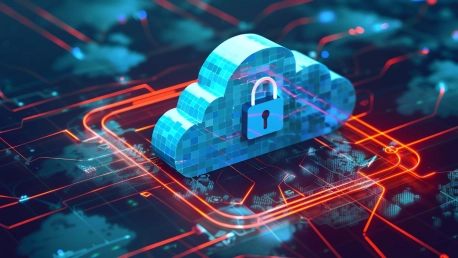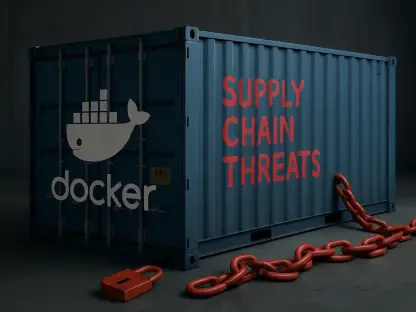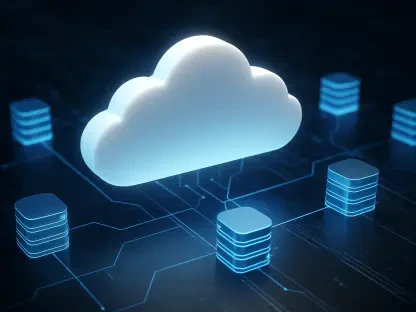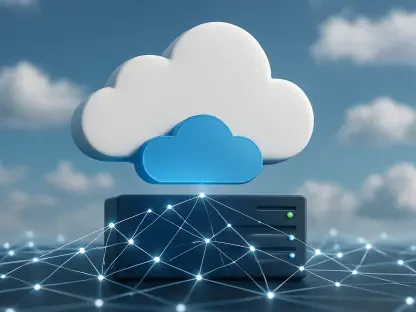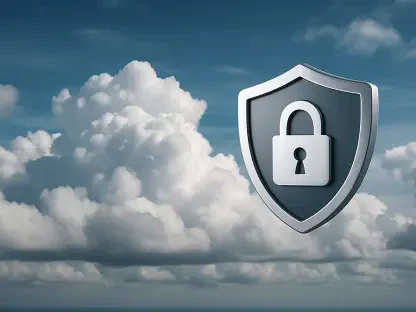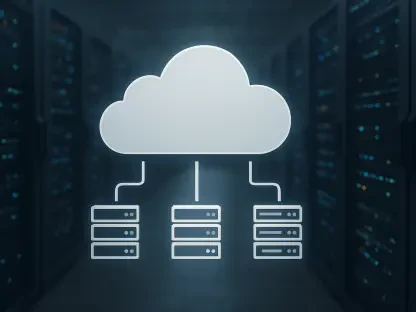Cloud computing has transformed the way organizations operate, offering unparalleled flexibility, scalability, and cost savings. However, with these benefits come significant security challenges. Cloud security encompasses a broad array of practices, tools, and concerns aimed at protecting cloud-based systems and data from cyber threats. Understanding and implementing robust cloud security measures is crucial for maintaining the integrity, confidentiality, and availability of digital assets.
Understanding Cloud Security
Cloud security is an essential subset of cybersecurity that focuses on protecting cloud architectures from both external and internal threats. Unlike traditional on-premises systems, cloud environments are inherently more exposed, necessitating robust security policies, standardized practices, and a suite of security tools. These tools include, but are not limited to, data loss prevention (DLP), identity and access management (IAM), and encryption frameworks.The importance of cloud security lies in its ability to prevent data breaches, system failures, and unauthorized access—each of which can severely disrupt business operations. Robust cloud security measures are critical to ensure that data remains safe, whether it’s being stored, processed, or transmitted. They also provide a framework for compliance with regulatory requirements, avoiding legal repercussions and maintaining customer trust.
Key Cloud Security Tools
One of the foundational elements in cloud security is Identity and Access Management (IAM). IAM tools are designed to control who has access to cloud resources and how that access is utilized. By managing user permissions and monitoring access, IAM systems help prevent unauthorized entry and misuse of resources. This secure access control is vital as it ensures that only authorized personnel can access sensitive data, thereby safeguarding against both external and internal threats.Another crucial toolset is Security Information and Event Management (SIEM). SIEM tools automate the monitoring of cloud environments, detecting and reporting threats in real-time. Leveraging artificial intelligence and machine learning, SIEM solutions can quickly identify unusual activities, reducing the reliance on human oversight and promptly alerting security administrators to potential threats. These tools not only enhance security but also optimize the efficiency of threat detection and response mechanisms.Data Loss Prevention (DLP) systems are vital for ensuring that data is handled properly within the cloud environment. These systems set and enforce policies for data storage, sharing, and access, automatically detecting and addressing policy violations. This protective measure helps safeguard sensitive information from accidental or malicious exposure. DLP tools are invaluable for maintaining the integrity and confidentiality of data, making them indispensable components of a comprehensive cloud security strategy.
Exploring Public Key Infrastructure (PKI) and Cloud Security Posture Management (CSPM)
Public Key Infrastructure (PKI) frameworks play an essential role in securing data transfer through encryption and digital certificates. PKI systems are crucial for verifying the authenticity of servers and ensuring that communication between entities in the cloud is secure, thus protecting data integrity and confidentiality. By incorporating PKI, organizations can ensure a higher level of trust and security in their communications, which is essential for maintaining the integrity of the entire cloud infrastructure.Cloud Security Posture Management (CSPM) tools are dedicated to maintaining a secure cloud environment by continuously monitoring for misconfigurations, potential compliance breaches, and insecure interfaces and APIs. These tools help automate the detection and correction of security issues, making it easier to maintain a strong security posture in an ever-evolving cloud landscape. CSPM platforms provide organizations with real-time insights into their security status, enabling them to address vulnerabilities swiftly and efficiently.In addition to CSPM, Secure Access Service Edge (SASE) integrates various network security services to provide a centralized security system for cloud interactions. SASE simplifies overall security management by unifying multiple security functions into a single framework, enhancing the protection and efficiency of cloud operations. By leveraging SASE, organizations can streamline their security processes, reduce complexities, and ensure that their cloud environments are well-protected against a wide range of potential threats.
Cloud-Native Security Solutions: CNAPP and Governance
Cloud-Native Application Protection Platforms (CNAPP) are designed specifically for cloud environments. These platforms combine multiple security systems into a cohesive package, addressing issues that arise when using on-premises designed tools in the cloud. CNAPPs streamline security implementation, ensuring that cloud applications are protected from development through deployment. By integrating various security tools and practices, CNAPPs offer a more comprehensive and seamless approach to safeguarding cloud-native applications.Cloud security governance is another critical component, involving the establishment of security principles, protocols, and policies by organizational leadership. Effective governance guides security practices and ensures that security measures align with broader organizational goals. This top-down approach fosters a culture of security awareness and accountability, which is vital for maintaining a secure cloud environment. Governance frameworks help organizations standardize their security practices, ensuring that all cloud activities adhere to established policies and protocols.By incorporating strong cloud security governance, organizations can better manage their security risks and ensure that their cloud environments are compliant with industry standards and regulations. This proactive approach to security governance not only enhances the protection of digital assets but also contributes to the overall resilience and robustness of cloud operations. By prioritizing governance, organizations can create a secure and compliant cloud environment that supports their business objectives.
Business Continuity, Disaster Recovery, and Legal Compliance
Business Continuity and Disaster Recovery (BCDR) tools are essential for ensuring that an organization can quickly recover from security incidents or system failures with minimal disruption. These tools establish policies and strategies for maintaining business operations and recovering data, helping organizations to bounce back quickly from adverse events. By implementing comprehensive BCDR plans, organizations can mitigate the impact of disruptions and ensure that their critical functions remain operational, even in the face of unforeseen challenges.Legal compliance is another significant aspect of cloud security. Different industries are subject to strict regulations regarding data handling and processing, such as GDPR and HIPAA. Cloud providers often offer built-in compliance solutions to help organizations meet these legal requirements, ensuring that they remain within regulatory guidelines and avoid potential penalties. Compliance with these regulations is crucial for maintaining the trust of customers and stakeholders, as well as for protecting the organization from legal and financial repercussions.By leveraging BCDR tools and ensuring legal compliance, organizations can create a resilient and secure cloud environment that is prepared to handle a variety of potential threats and challenges. These measures not only enhance the overall security posture of the organization but also contribute to its long-term stability and success. By prioritizing business continuity, disaster recovery, and compliance, organizations can ensure that their cloud operations remain secure, reliable, and resilient.
Cloud Security Architecture and Solutions
The architecture of cloud security encompasses a variety of tools, solutions, and technologies designed to secure cloud environments. This comprehensive framework must consider potential failures and include mechanisms for continuous monitoring and rapid recovery. Effective cloud security solutions integrate multiple components, such as IAM, DLP, PKI, CSPM, SASE, CNAPPs, data governance policies, BCDR tools, and compliance assistance. Each component of the cloud security architecture must be meticulously designed and deployed to ensure robust protection across the board.By leveraging these diverse tools and solutions, organizations can create a secure cloud environment that safeguards against a wide range of cyber threats. Cloud security architecture should be dynamic and adaptable, capable of evolving to address new and emerging threats. Continuous monitoring and real-time threat detection are essential for maintaining the integrity and security of the cloud environment. By implementing a comprehensive and integrated security architecture, organizations can protect their cloud resources and ensure the confidentiality, integrity, and availability of their data.In addition to technical solutions, organizations must also focus on building a strong security culture that emphasizes the importance of following best practices and maintaining vigilance against potential threats. This holistic approach to cloud security, combining advanced technologies with a strong organizational commitment to security, will enable organizations to achieve a high level of protection and resilience in their cloud environments.
The Shared Responsibility Model and Service Models Security
The shared responsibility model is a fundamental concept in cloud security that divides security responsibilities between the cloud provider and the client. Cloud providers are typically responsible for securing the infrastructure, while clients must implement controls to manage access and data protection. This model ensures that both parties play a role in maintaining a secure cloud environment, with providers focusing on the underlying infrastructure and clients managing their data and access controls.Security responsibilities vary depending on the type of cloud service model being used. In Software as a Service (SaaS) environments, clients secure user access and data, while the provider manages the underlying infrastructure and applications. In Platform as a Service (PaaS) models, clients secure user access, data, and applications developed using the platform, while the provider continues to manage the infrastructure. In Infrastructure as a Service (IaaS) environments, clients secure everything included in SaaS and PaaS, along with third-party applications, operating systems, and middleware.Understanding the shared responsibility model and the specific security requirements of different cloud service models is crucial for maintaining a secure cloud environment. Clients must be proactive in implementing robust security controls and continuously monitoring their cloud environments for potential threats. By clearly delineating responsibilities and ensuring that both parties fulfill their obligations, organizations can achieve a higher level of security and resilience in their cloud operations.
Conclusion and Recommendations
Cloud computing has revolutionized the way organizations operate by providing exceptional flexibility, scalability, and cost-effectiveness. These advantages come with their own set of significant security challenges. Cloud security involves a comprehensive range of practices, tools, and protocols designed to safeguard cloud-based systems and data from cyber threats. Ensuring robust cloud security is imperative for maintaining the integrity, confidentiality, and availability of digital assets.In today’s dynamic technological landscape, businesses increasingly depend on cloud services for storage, processing, and management of data. However, the shift to cloud computing also opens up new avenues for potential cyber threats. From data breaches and identity theft to unauthorized access and denial-of-service attacks, the risks are numerous and ever-evolving. As a result, organizations must prioritize cloud security to protect against these vulnerabilities.Effective cloud security strategies include encryption, multi-factor authentication, regular security audits, and employing advanced monitoring tools. Moreover, understanding the shared responsibility model, where both the cloud provider and the customer have roles in ensuring security, is vital. By implementing a comprehensive approach to cloud security, organizations can leverage the benefits of cloud computing while minimizing the inherent risks, ultimately securing their digital environment against potential threats.
